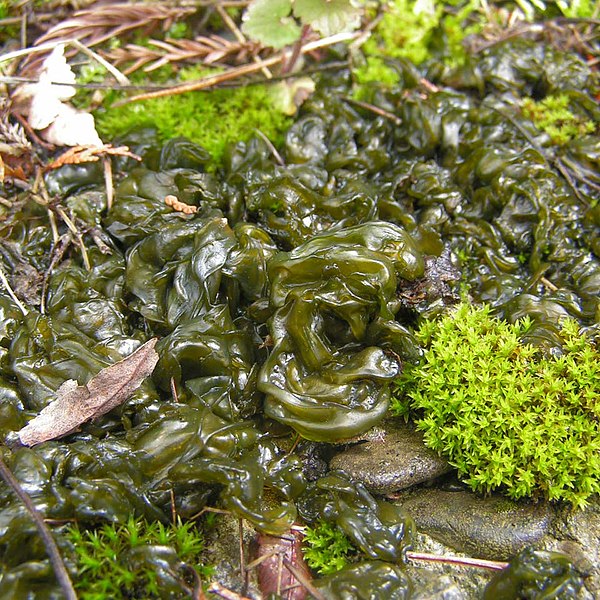Nostoc, also known as star jelly, troll's butter, spit of moon, fallen star, witch's butter, and witch's jelly, is the most common genus of cyanobacteria found in a variety of both aquatic and terrestrial environments that may form colonies composed of filaments of moniliform cells in a gelatinous sheath of polysaccharides. It may also grow symbiotically within the tissues of plants, providing nitrogen to its host through the action of terminally differentiated cells known as heterocysts. Nostoc is a genus that includes many species that are diverse in morphology, habitat distribution, and ecological function. Nostoc can be found in soil, on moist rocks, at the bottom of lakes and springs, and rarely in marine habitats. It may also be found in terrestrial temperate, desert, tropical, or polar environments.
Nostoc
Nostoc strains
Terrestrial colony of Nostoc
Aquatic Nostoc
Star jelly is a gelatinous substance sometimes found on grass and less commonly on the branches of trees. According to folklore, it is deposited on the Earth during meteor showers. It is described as a translucent or grayish-white gelatin that tends to evaporate shortly after having "fallen". Explanations have ranged from it being the remains of frogs, toads, or worms, to the byproducts of cyanobacteria, to being the fruiting bodies of jelly fungi or masses of amoeba called slime molds. Nonbiological origins proposed for instances of "star jelly" have included byproducts from industrial production or waste management. Reports of the substance date back to the 14th century and have continued to the present.
An instance of unidentified star jelly on Grimmia pulvinata, a species of moss.
Oviducts of amphibians regurgitated by predators. (The black object in lower left corner is a cluster of eggs.)
Fructification of a slime mold
The false puffball slime mold in its aethalioid jelly phase








